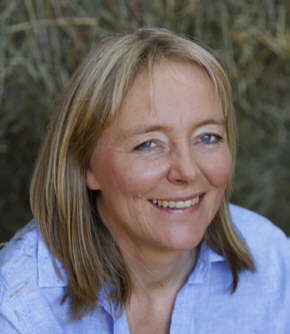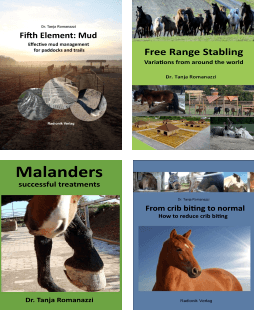Active Stable
Active stabling is a free range stabling concept developed for the main part by the company HIT in 2000/2001. The term refers to a free range stable where the horses live together in a herd and forage and concentrate feeding is implemented by computer-operated feeding stations.
There is another “active stabling” model, based on the same principle. It is operated by the second largest manufacturer of computer operated feeding stations – the Austrian company Schauer.
In an active stable, the horses wear a neck or fetlock collar with a transponder or a chip implanted under their skin, so that these can be recognized by the computer at the feeding station and each horse is fed the individually allotted amount. The feed is divided into up to 20 meals. After each meal, there is a one-hour lock-out, so that in this free range stabling facility the horse has to collect its feeds from the feeding station throughout the day.
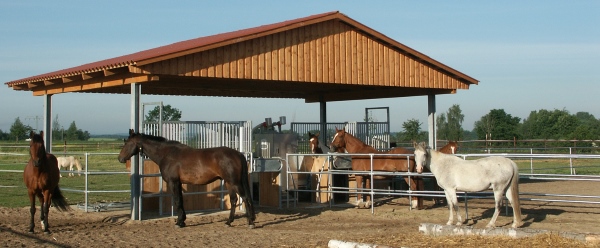
A double concentrate feeding station produced by the company HIT for feeding two groups.
In this free range stable, the functional areas (concentrates, hay, straw, water, rest area) are spaced as far apart as possible to encourage the horses to move around. They have to remain “active” in order to fulfill all their needs.
Forage feeding in an active stable
The heart of every active stable is the concentrate feeding station. There are, however, a number of different options available for forage feeding. Aside from the conventional racks, time-controlled shutter feeders can also be used. These open up at pre-set intervals to allow the horses to feed. This allows you to regulate predetermined amounts of feed distributed over the course of the day, while also allowing the horses to feed in a group. Each horse is fed the same amount of hay.
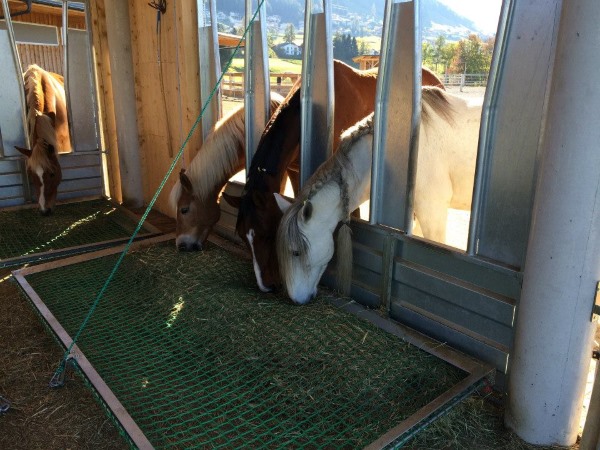
Photo courtesy of HIT: horses feeding from a shutter hay feeder.
The photo shows a shutter hay feeder by the company HIT. The nets are spread out over the hay to allow the horses to feed at their allotted times. When feeding time is over, the nets are raised to prevent the horses from reaching the hay.
If you want to adjust the size of each horse’s the hay feed, you will need a hay dispenser which recognizes every horse and its pre-set feeding time according to its transponder.
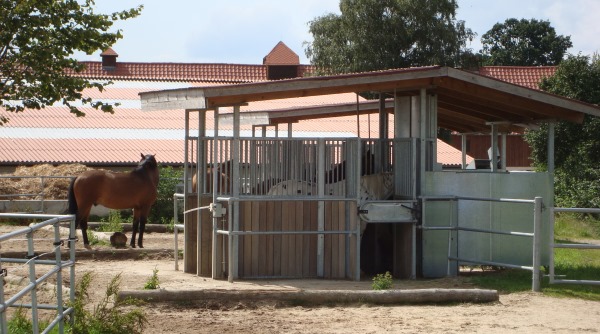
A double hay dispenser by the company HIT
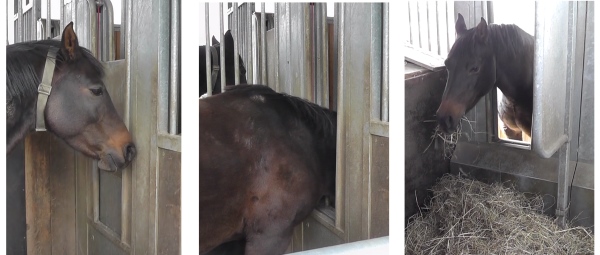
A shutter hay feeder, showing closed shutter (1), open shutter (2), and from the other side during feeding (3)
These two methods are frequently used in combination. This means that the horses eat small hay feeds in the group and only the horses who need more are provided with extra feed by the hay dispensers.
Advantages of active stabling compared to other free range stabling concepts:
- Feed size can be individually adjusted for every horse. That way, there are no “bags-of-bones” and no “fatties”.
- The feeds are distributed throughout the day in small portions. This carries great benefits for the equine digestive system.
- The horses are occupied “mentally” as they have to go and get their own food at the feeding stations.
- The many small feeds encourage the animals to move around more, leading to more “active” horses.
Problems or disadvantages of active stabling?
- The horses cannot follow their own rhythms, instead, they are influenced by the computer aided feeding.
- Concentrate feeding, and in some cases forage feeding, cannot be accomplished in a group.
- Low ranking horses may suffer from stress. They may have to wait a long time for their turns.
- Short forage feeding times lead to fast, hasty feeding.
- When feeding from the hay dispensers, horses who don’t get on or occupy very different ranking positions may have to stand next to each other. This will lead to stress while feeding and the horses may kick the dividers.
On the following pages I will present an active stable at Gut Heinrichshof, where forage and concentrate feeds are dispensed with the aid of computers (diet group) and another free range stable, where the horses get only their concentrate feeds from a computerized feeding station (gelding group).
